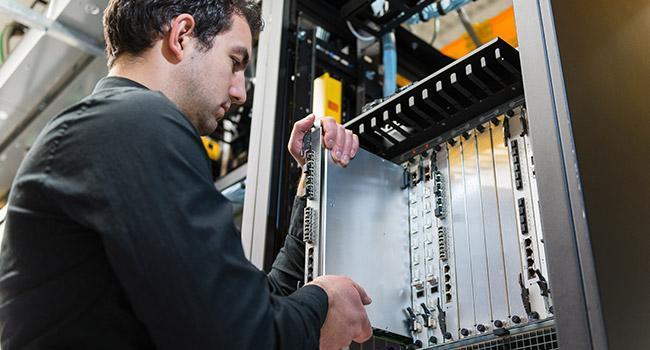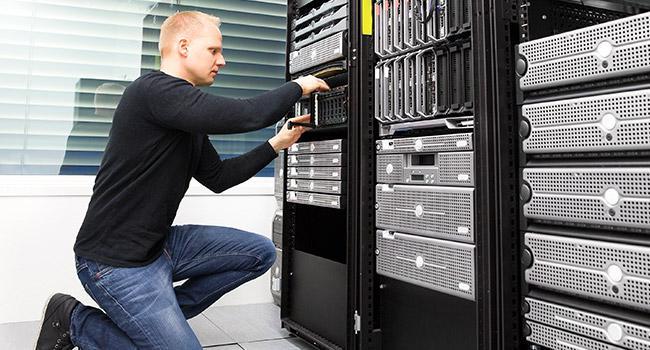Six Benefits of IT Infrastructure Standardisation in the Enterprise

The reliability of the IT organisation plays a critical role in every enterprise, given how the use of technology has deeply entrenched itself into every business organisation. From being more of back office tools a few decades ago, IT systems are now front and center in many enterprises’ business activities.
With IT contributing significantly to customer-facing applications, analytics services, and even creating new revenue streams for the enterprise, it’s important for the IT group to maintains its operational and cost efficiency. One way to ensure that the IT network competently responds to business needs while keeping within budgets is to implement IT infrastructure standardisation.
Here are six key benefits of IT standardisation:
-
Reduced acquisition costs

Standardised hardware and network equipment are usually sourced from one vendor or supplier per type. This often translates to lower acquisition costs, better service, and generally, enhanced buying power. Procuring equipment in significant quantities and from only a few select vendors may allow you to leverage for more advantageous pricing and negotiate SLA terms that support your security and compliance requirements.
IT standardisation also facilitates easier tracking of technology assets. With a good number of hardware devices acquired at the same time, they will be following the same life cycles and will be depreciating around the same time as well.
-
Scalable and future-ready infrastructure

Your company could be looking to upgrade your data centre some 4 to 6 years down the road. This is because as data collection continues and business transactions increase, your density and capacity requirements will be greater by then. Keeping in mind these potential changes in your IT resources, it’s wise to plan today for eventual infrastructure additions.
Implementing a standardised IT infrastructure helps in establishing maximum scalability of your network. The architecture can be developed in a way that takes into account not only performance, but also flexibility and optimal space configuration. When technology requirements call for enhancements, it’s easier to put on additional building blocks with a standard infrastructure base to build on. This approach, in a way, future-proofs the enterprise’s current IT network without spending hefty upfront costs for equipment that would only be needed later.
-
Easier and faster deployment

Making disparate systems work together not only compromises the performance of the network; it also makes IT environments more complex than ever. Standardisation of components and connections simplifies the configuration and installation processes resulting in faster and more consistent deployment.
This also eliminates any unnecessary guesswork in troubleshooting procedures. If there are adds, moves, or changes that need to be implemented later on, reconfiguring the components should prove to be a less complicated task.
-
Streamlined IT management.

An IT network made up of various hardware components, solutions, and services from different providers isn’t the easiest to oversee, putting a lot of strain on IT managers and system administrators. Different pieces of equipment will each have their own maintenance requirements which IT personnel would struggle to keep up with.
When standardised network infrastructure is utilised within the enterprise however, a lot of the complexities of IT management is streamlined because most equipment works the same way. Many maintenance concerns such as device upgrades, software patches, troubleshooting issues, and others are now easier to address.
And while having a broad skillset range is always an advantage for an IT staff, having standardised equipment to deal with allows technical guys to hone their expertise on the particular type of infrastructure your enterprise has.
-
Efficient communications and resolution of issues.

Company employees from other units may lack the technical knowhow that IT staff have. As such, some users can get ‘lost in translation’ when communicating with the IT department, particularly when dealing with complicated network or PC problems. Standardisation of devices and equipment promotes clear, efficient communications, with less room for confusion.
When everyone is coming from the same platform, making a technical diagnosis of the problem and giving out instructions can be carried out more efficiently. This not only creates a better-structured work environment for your employees and less frustrating environment for technicians, but also ensures faster resolution of network-related issues.
-
Simplified and collaborative decision making.

While still requiring serious consideration, the process of deciding on technology investments and/or acquiring additional hardware becomes less complex when standardisation is applied in the enterprise. This is because with a set standard for IT infrastructure components, management and IT do not have to exhaustively go over every detail of the technology equipment procured every time the need for one crops up.
For some enterprises, IT standardisation also makes the decision-making process a more collaborative one because inputs from critical users are also taken into account. Aside from the organisation’s executives and IT managers, the discussion could also include top leaders from the information security, production, sales and marketing, analytics, and customer service teams as well as other significant stakeholders.
Why it’s time to standardise your IT Infrastructure
Standardising IT infrastructure does not follow any one-size-fits-all plan. If your enterprise chooses to do so, how far your standardisation efforts can go largely depends on what your existing IT network looks like at the moment and what your business needs are. Infrastructure standardisation can come easiest when a business is starting from scratch, or looking to make a complete upgrade and overhaul of its current IT resources.
As you evaluate your options for standardisation, it’s worth keeping in mind that at its most ideal level, utilising standard IT infrastructure across the organisation brings about the advantages of scalability, repeatability, reliability, and cost optimisation as no network of disparate systems ever can.
Related Posts
By accepting you will be accessing a service provided by a third-party external to https://www.htl.london/